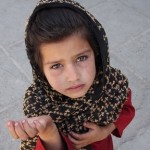written by Shahid Javed Burki, Karachi: oxford university press, 2022, pages 337
Wajeeha Najam
Shahid Javed Burki, a professional economist who previously held the position of Vice President at the World Bank, has authored this comprehensive book delving into the realms of economic development and the political history of Pakistan. In this extensive work, he explores the significance of global external relations for nations, placing a specific emphasis on Pakistan’s interactions on the international stage.
He explores the positive image of Pakistan, substantiating it with valuable facts and multiple shreds of evidence. He begins his work by citing scholars who view Pakistan as a “hard country,” a term used by Anatol Lieven. This term signifies Pakistan’s ability to navigate crises through a system of patron-client relationships in the social, political, and economic domains.
Burki argues that Pakistan, among a selected few Muslim nations, is successfully developing its social, political, and economic systems conducive to long-term stability. He quotes an article titled ‘Pakistan, the Global Pivot State,’ written by Russian political analyst Andrew Korybko, highlighting Pakistan’s economic potential, international connectivity, military strength, diplomatic finesse, and the importance of its strategic location, envisioning it as the global pivot state of the 21st century. He claims, though contrary to common belief, that the pivotal global state of the 21st century is not China, the US, or Russia, but rather Pakistan. Despite a negative international reputation stemming from the Indo-American information war, Korybko believes that Pakistan is strategically positioned to influence the 21st century.
Burki insists that no country can exist in isolation from the world outside its borders while presenting the experience of the global spread of COVID-19 when even island states were affected by the spread of what was happening in the world. He further argues that to understand Pakistan’s external affairs, it is important to set the context by discussing the changes in the domestic political situation.
He has divided his book into 14 extensive chapters. In the introductory chapters, he discusses the internal politics of Pakistan particularly people’s aspirations regarding the elections of 2018, and the given vision of Naya Pakistan, Emphasizing the importance of Pakistan’s location rotates the globe towards a new global order which is exceptional. He also debates that historians didn’t give enough credit to the country’s policymakers for weathering so many crises that hit it just after its independence.
In the subsequent chapters, the book broadly explores Pakistan’s relationships with its neighbors, particularly Afghanistan, and the challenges posed by groups like the Tehreek-i-Taliban Pakistan (TTP). It also investigates the internal political challenges within Pakistan, emphasizing the lack of a culture of tolerance and the breakdown of the democratic process.
In the context of India-Pakistan relations, the book examines the Pulwama incident and the succeeding tensions, as well as the rise of Hindu nationalism in India. Burki stresses the importance of Pakistan closely monitoring India’s policies and actions.
The book also highlights the discriminatory nature of Indian legislation, exemplified by the Citizenship (Amendment) Act of 2019. An illustrative incident involving an Indian businessman, expressing hatred for Pakistan, underscores prevailing prejudices.
Burki identifies reasons for Pakistan’s close monitoring of India, citing concerns over India’s declining democratic setup, the rise of Hindu nationalism, and an ‘India first’ policy hindering regional progress.
Additionally, the author scrutinizes Pakistan’s symbiotic relationship with China, specifically focusing on the China-Pakistan Economic Corridor (CPEC) and its global implications. The book discusses the challenges posed by the escalating American hostility towards China and the impact on Pakistan due to India’s military alliance with the US.
Regarding Pakistan’s relationship with China, Burki deems the China-Pakistan Economic Corridor (CPEC) crucial within Beijing’s Belt and Road Initiative (BRI). Despite concerns about U.S. pressure due to India’s alliance, the book optimistically envisions a bright future for Pakistan.
The author delves into Iran’s history from the inception of Pakistan, meticulously examining the pre-revolutionary era and its aftermath. The narrative extends to encompass Iran’s evolving relations with Pakistan amid shifting global dynamics. The book features dedicated chapters shedding light on Pakistan’s diplomatic ties with Muslim nations, particularly Saudi Arabia, countries in the Middle East, and Turkey.
While the emphasis primarily centers on external affairs, the author goes beyond, addressing global issues like terrorism, climate change, and global warming in a comprehensive manner and elucidating their impact on Pakistan.
In essence, the book offers a thorough exploration of Pakistan’s geopolitical history and presents an optimistic vision for the nation despite prevailing challenges. It is noteworthy that the author consistently reinforces the credibility of his research by citing various sources, including books, research journals, magazines, and newspaper articles throughout the entire book.







